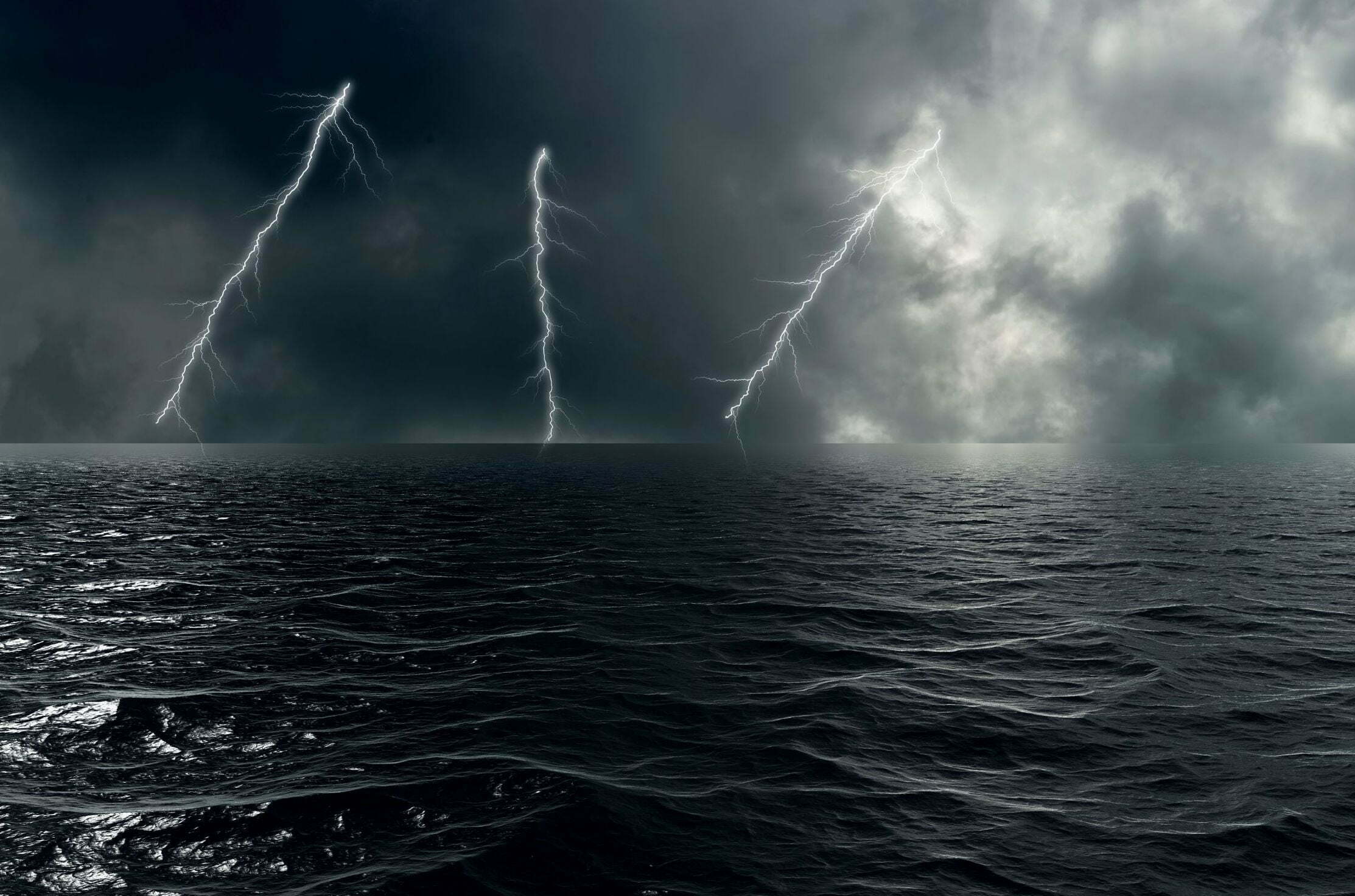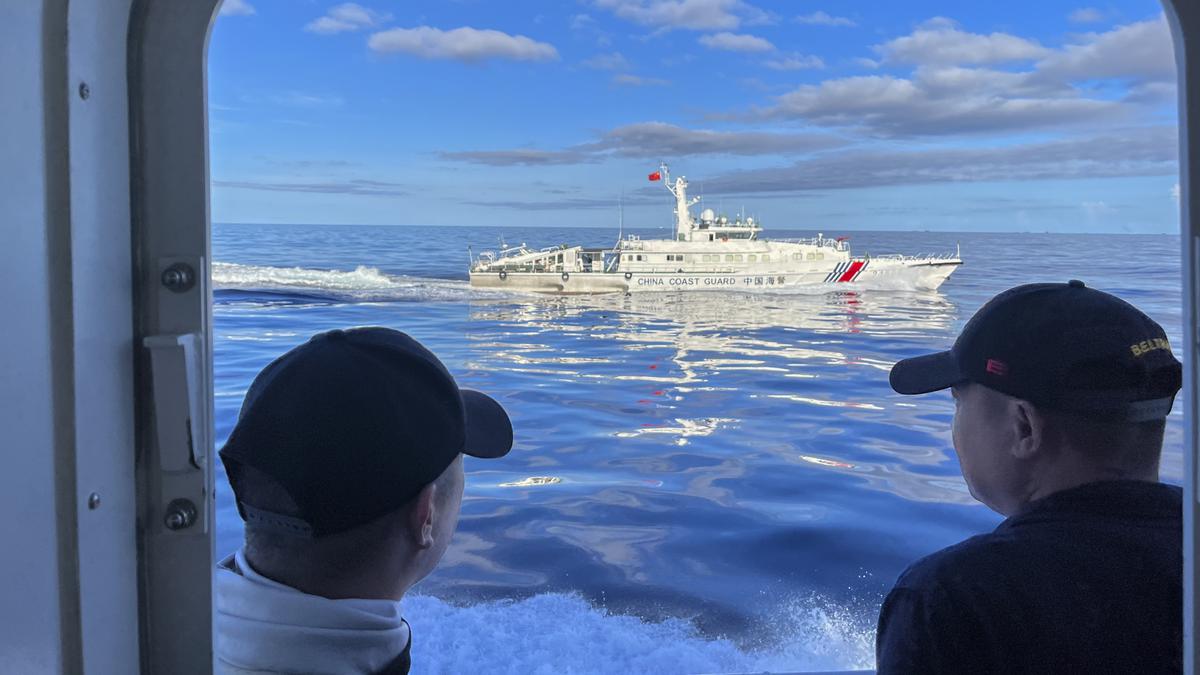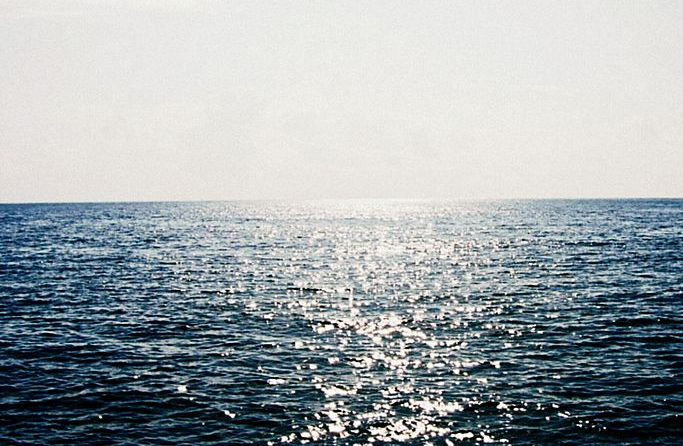Welcome aboard, fellow ocean enthusiasts, to a voyage through the azure expanse of Earth’s greatest treasures – its Best Ocean. As we embark on this journey, we’ll dive deep into the splendor of the world’s most captivating bodies of water, each a masterpiece of nature’s craftsmanship.
From the rhythmic lullaby of waves caressing sandy shores to the majestic depths where mysteries abound, the oceans hold a profound allure for adventurers, scientists, and dreamers alike. Join me as we set sail to uncover the top best ocean our planet has to offer, from the sun-kissed tropics to the icy realms of the poles.
With each wave crest and sea breeze, let’s delve into the wonders that await beneath the surface, from vibrant coral reefs teeming with life to the tranquil expanses where solitude reigns supreme. Whether you’re drawn to the vibrant colors of tropical paradises or the raw power of untamed wilderness, there’s an oceanic gem waiting to capture your imagination.
So, grab your snorkel, don your diving gear, or simply let your mind wander as we embark on an odyssey to discover the top best ocean in the world. Prepare to be enthralled, enchanted, and utterly captivated by the boundless beauty of our planet’s aquatic realms.
Atlantic Ocean

The Atlantic Ocean, one of the world’s five major oceans, holds a significant place in global geography, history, and ecology.
Geographic Location and Size – Best Ocean
The Atlantic Ocean spans between the Americas to the west and Europe and Africa to the east, covering approximately 20% of the Earth’s surface.
Formation and Geology
The Atlantic Ocean formed over millions of years through processes like seafloor spreading and plate tectonics, resulting in its vast expanse and diverse underwater landscapes.
Climate and Weather Patterns
The Atlantic Ocean influences weather patterns across surrounding continents, playing a crucial role in shaping global climate systems.
Marine Life and Biodiversity
Its waters teem with diverse marine life, from microscopic plankton to majestic whales, supporting complex ecosystems and fisheries vital for human sustenance.
Human Interaction and Economy
Humans have interacted with the Atlantic for centuries, relying on it for trade, transportation, and resources, contributing to the ocean’s economic significance.
Environmental Concerns and Conservation Efforts
Despite its importance, the Atlantic faces numerous threats like pollution, overfishing, and climate change, prompting conservation efforts to protect its fragile ecosystems.
Importance for Global Climate Regulation
The Atlantic Ocean plays a vital role in regulating Earth’s climate through processes like heat distribution and carbon absorption, highlighting its importance for global environmental stability.
Exploration and Discovery
Throughout history, the Atlantic has been a focal point for exploration, leading to significant discoveries and expeditions that have shaped our understanding of the world.
Cultural Significance
The Atlantic Ocean holds cultural significance for communities worldwide, inspiring art, literature, and traditions that celebrate its beauty and power.
Oceanography Research and Discoveries
Oceanographers continue to study the Atlantic, uncovering new insights into its currents, marine life, and geology, driving scientific progress and innovation.
Notable Features and Landmarks
From the Mid-Atlantic Ridge to the Bermuda Triangle, the Atlantic boasts numerous notable features and landmarks that intrigue and mystify scientists and explorers alike.
Tourism and Recreation
Tourism and recreation thrive along the Atlantic coast, attracting millions of visitors each year to enjoy its beaches, wildlife, and water sports.
Future Challenges and Opportunities
As we face the challenges of climate change and environmental degradation, the Atlantic presents both challenges and opportunities for sustainable development and conservation efforts.
Read About: Top Best Luxurious Hotels All Time In The World
Arctic Ocean – Best Ocean
The Arctic Ocean, often referred to as the “frozen ocean,” is a unique and mysterious body of water located at the northernmost part of the Earth. In this article, we delve into the details of this fascinating ocean, covering its geography, climate, wildlife, human activities, environmental challenges, and more.
Geographic Location and Size
The Arctic Ocean is situated largely within the Arctic Circle and is surrounded by the northernmost regions of North America, Europe, and Asia. It is the smallest and shallowest of the world’s five major oceans, covering an area of approximately 14 million square kilometers.
Formation and Geology
The Arctic Ocean formed through a combination of tectonic processes and glaciation over millions of years. Its geology is characterized by continental shelves, ridges, and deep basins, with the Arctic Basin being the deepest part of the ocean.
Climate and Weather Patterns
The Arctic Ocean experiences extreme cold temperatures and is covered by sea ice for much of the year. Its climate is influenced by factors such as the polar ice cap, ocean currents, and atmospheric circulation patterns, resulting in harsh conditions for much of the year.
Marine Life and Biodiversity
Despite its icy waters, the Arctic Ocean supports a diverse range of marine life, including fish, mammals, birds, and invertebrates. Species such as polar bears, seals, whales, and walruses are adapted to the unique conditions of the Arctic environment.
Human Interaction and Economy
Human activities in the Arctic Ocean include fishing, shipping, oil and gas exploration, scientific research, and indigenous subsistence hunting. The region’s resources and strategic importance have led to increased international interest and competition in recent years.
Environmental Concerns and Conservation Efforts
The Arctic Ocean faces numerous environmental challenges, including climate change, melting sea ice, pollution, and habitat degradation. Conservation efforts aim to protect the region’s fragile ecosystems and mitigate the impacts of human activities.
Importance for Global Climate Regulation
The Arctic Ocean plays a crucial role in regulating Earth’s climate, acting as a heat sink and influencing ocean circulation patterns. Changes in the Arctic can have far-reaching effects on global weather and climate systems.
Exploration and Discovery
Exploration of the Arctic Ocean has a long history, dating back to early expeditions in search of the Northwest Passage and the North Pole. Modern scientific research continues to uncover new insights into the ocean’s geology, ecosystems, and climate dynamics.
Cultural Significance
The Arctic Ocean holds cultural significance for indigenous peoples who have inhabited the region for thousands of years. Their traditional knowledge and way of life are closely tied to the ocean and its resources.
Tourism and Recreation
Tourism in the Arctic Ocean region is growing, with travelers drawn to its unique landscapes, wildlife, and opportunities for adventure. However, tourism also brings challenges in terms of environmental impact and cultural preservation.
Future Challenges and Opportunities
As the Arctic Ocean undergoes rapid environmental changes, there are both challenges and opportunities for sustainable development, conservation, and international cooperation. Balancing economic interests with environmental protection will be crucial for the future of the region.
Read About: Top Best Horror Movies All Time In The World
Indian Ocean
The Indian Ocean, the third-largest of the world’s oceanic divisions, holds immense significance for geography, trade, and biodiversity.
Geographic Location and Size – Best Ocean
Spanning between Africa to the west, Asia to the north, Australia to the east, and Antarctica to the south, the Indian Ocean covers approximately 20% of the Earth’s water surface.
Formation and Geology
The Indian Ocean formed over millions of years through geological processes, including plate tectonics and volcanic activity, resulting in its unique topography and oceanic features.
Climate and Weather Patterns
The Indian Ocean influences regional weather patterns, including the Asian monsoon system, which plays a vital role in sustaining life and agriculture in the surrounding regions.
Marine Life and Biodiversity
Rich in biodiversity, the Indian Ocean harbors diverse marine ecosystems, ranging from coral reefs and mangroves to deep-sea trenches, supporting a vast array of marine species.
Human Interaction and Economy
Human civilizations have thrived along the shores of the Indian Ocean for millennia, relying on its waters for trade, transportation, and livelihoods, contributing to its economic significance.
Environmental Concerns and Conservation Efforts
Despite its importance, the Indian Ocean faces threats such as pollution, overfishing, and habitat destruction, prompting conservation efforts to protect its fragile ecosystems.
Importance for Global Trade and Commerce
As a major maritime highway, the Indian Ocean facilitates global trade and commerce, connecting markets and facilitating the movement of goods between continents.
Exploration and Discoveries
Throughout history, the Indian Ocean has been a focal point for exploration, leading to significant discoveries and trade routes that have shaped the course of human history.
Cultural Significance
The Indian Ocean holds cultural significance for diverse communities, fostering trade, exchange, and cultural diffusion across continents and civilizations.
Oceanography Research and Discoveries
Oceanographers continue to study the Indian Ocean, uncovering new insights into its currents, marine life, and geological formations, advancing scientific knowledge and understanding.
Notable Features and Landmarks
From the Arabian Sea to the Bay of Bengal, the Indian Ocean boasts numerous notable features and landmarks that attract scientists, explorers, and tourists alike.
Tourism and Recreation
Tourism and recreation thrive along the coastlines of the Indian Ocean, drawing millions of visitors each year to its pristine beaches, vibrant coral reefs, and cultural heritage sites.
Future Challenges and Opportunities
As we confront the challenges of climate change and environmental degradation, the Indian Ocean presents both challenges and opportunities for sustainable development and conservation efforts.
Read About: Top Best Cryptocurrencies All Time In The World
Caribbean Sea – Best Ocean
The Caribbean Sea, bordered by the Caribbean islands and Central and South America, is a vibrant and diverse body of water with rich cultural, ecological, and economic significance.
Geographic Location and Size
Situated in the western part of the Atlantic Ocean, the Caribbean Sea spans approximately 2,754,000 square kilometers, encompassing a vast area of tropical waters.
Formation and Geology
The Caribbean Sea formed millions of years ago due to tectonic activity and volcanic processes, resulting in its unique underwater topography, including deep trenches and coral reefs.
Climate and Weather Patterns
Characterized by tropical climate, the Caribbean experiences warm temperatures year-round, with the occasional occurrence of hurricanes and tropical storms during the Atlantic hurricane season.
Marine Life and Biodiversity
The Caribbean Sea boasts a diverse array of marine life, including colorful coral reefs, tropical fish, sea turtles, and marine mammals, making it a hotspot for biodiversity and conservation efforts.
Human Interaction and Economy
Humans have interacted with the Caribbean Sea for centuries, relying on it for fishing, transportation, trade, and tourism, contributing to the region’s economy and cultural identity.
Environmental Concerns and Conservation Efforts
Despite its natural beauty, the Caribbean Sea faces threats such as pollution, overfishing, habitat destruction, and climate change, prompting conservation initiatives to protect its fragile ecosystems.
Importance for Regional Tourism
The Caribbean Sea is a popular tourist destination, attracting millions of visitors each year to its pristine beaches, vibrant coral reefs, and rich cultural heritage, driving the region’s tourism industry.
Exploration and Discoveries
Throughout history, the Caribbean Sea has been a focal point for exploration and discovery, with notable expeditions and discoveries shaping our understanding of the region’s geography and history.
Cultural Significance
The Caribbean Sea holds immense cultural significance for the diverse communities inhabiting its shores, influencing art, music, cuisine, and traditions that reflect its multicultural heritage.
Notable Features and Landmarks
From the Caribbean islands to the famous Blue Hole in Belize, the Caribbean Sea boasts numerous notable features and landmarks that captivate visitors and researchers alike.
Recreation and Leisure Activities
The Caribbean Sea offers a plethora of recreational activities, including snorkeling, scuba diving, sailing, and beachcombing, providing endless opportunities for leisure and adventure.
Threats and Challenges
Despite its allure, the Caribbean Sea faces various threats and challenges, including coastal development, pollution, habitat degradation, and unsustainable fishing practices, jeopardizing its future sustainability.
Conservation Initiatives
To address these challenges, numerous conservation initiatives and marine protected areas have been established across the Caribbean region, aimed at preserving its natural beauty and biodiversity for future generations.
Read About: Top Best Companies All Time In The World
Southern Ocean

The Southern Ocean, also known as the Antarctic Ocean, is a distinct body of water encircling Antarctica, characterized by its unique ecosystems, extreme climate, and importance for global oceanic circulation.
Geographic Location and Boundaries – Best Ocean
Situated south of the 60th parallel south, the Southern Ocean extends from the coast of Antarctica to the northern boundaries of the Atlantic, Indian, and Pacific Oceans, covering an area of approximately 20.3 million square kilometers.
Formation and Geological Features
The Southern Ocean formed as a result of the Antarctic Circumpolar Current isolating Antarctica from warmer oceanic waters, creating a distinct oceanic region with its own circulation patterns and ecological dynamics.
Climate and Weather Patterns
Marked by frigid temperatures, strong winds, and vast expanses of sea ice, the Southern Ocean experiences some of the harshest climatic conditions on Earth, influencing weather patterns and oceanic currents worldwide.
Unique Marine Life and Biodiversity
Despite its hostile environment, the Southern Ocean supports a rich diversity of marine life, including krill, seals, whales, and various species of fish and seabirds adapted to its cold waters.
Human Exploration and Scientific Research
The Southern Ocean has been a focal point for exploration and scientific research, with expeditions and research missions uncovering new insights into its oceanography, marine biology, and climate dynamics.
Environmental Challenges and Conservation Efforts
The Southern Ocean faces environmental threats such as climate change, overfishing, pollution, and habitat degradation, prompting conservation efforts and marine protected areas to safeguard its fragile ecosystems.
Importance for Global Climate Regulation
As a key component of the Earth’s climate system, the Southern Ocean plays a crucial role in regulating global climate patterns through processes like carbon sequestration, heat absorption, and oceanic circulation.
Cultural and Historical Significance
The Southern Ocean holds cultural and historical significance for indigenous peoples, explorers, and scientists, with a rich legacy of exploration, discovery, and human interaction dating back centuries.
Notable Features and Landmarks
From the icy expanses of the Antarctic Peninsula to the remote islands of the Southern Ocean, the region boasts numerous notable features and landmarks that intrigue and inspire adventurers and researchers alike.
Tourism and Expeditions
Despite its remoteness, the Southern Ocean attracts intrepid travelers and expedition cruises seeking to explore its pristine wilderness, observe wildlife, and experience the awe-inspiring landscapes of Antarctica.
Legal Status and Governance
The legal status and governance of the Southern Ocean are governed by international agreements such as the Antarctic Treaty System, which regulates human activities and environmental protection in the region.
Future Prospects and Challenges
As climate change accelerates and human activities expand into the Southern Ocean, the region faces uncertain prospects and challenges, underscoring the need for global cooperation and sustainable management practices.
Read About: Top Best Action Movies All Time In The World
Mediterranean Sea – Best Ocean
The Mediterranean Sea, often referred to as the cradle of civilization, is a historic and culturally rich body of water that has played a central role in shaping the development of civilizations for thousands of years.
Geographic Location and Boundaries
Situated between Europe, Africa, and Asia, the Mediterranean Sea is bordered by numerous countries, including Spain, France, Italy, Greece, Turkey, Egypt, Libya, and Algeria, covering an area of approximately 2.5 million square kilometers.
Formation and Geology
The Mediterranean Sea formed over millions of years through tectonic processes and the closing of the Tethys Sea, resulting in its unique geological features, including deep basins, rugged coastlines, and volcanic islands.
Climate and Weather Patterns
The Mediterranean region enjoys a Mediterranean climate, characterized by hot, dry summers and mild, wet winters, making it a popular destination for sun-seeking tourists and outdoor enthusiasts.
Marine Life and Biodiversity
Despite its relatively small size, the Mediterranean Sea boasts a diverse array of marine life, including fish, crustaceans, mollusks, and marine mammals, supported by its nutrient-rich waters and diverse habitats.
Human Interaction and Economy
Humans have interacted with the Mediterranean Sea for millennia, relying on it for trade, transportation, fishing, and tourism, contributing to the region’s economy and cultural heritage.
Environmental Challenges and Conservation Efforts
The Mediterranean Sea faces numerous environmental challenges, including pollution, overfishing, habitat destruction, and climate change, prompting conservation initiatives and marine protected areas to safeguard its delicate ecosystems.
Importance for Regional Trade and Commerce
The Mediterranean Sea serves as a vital maritime highway for regional trade and commerce, connecting Europe, Africa, and Asia and facilitating the movement of goods, people, and ideas across borders.
Cultural Significance and History
The Mediterranean Sea holds immense cultural significance, with a rich history of ancient civilizations, empires, and cultural exchanges that have left their mark on the region’s architecture, art, cuisine, and traditions.
Notable Features and Landmarks
From the Greek islands to the Roman ruins of Italy, the Mediterranean Sea is dotted with numerous notable features and landmarks that attract millions of visitors each year, from ancient historical sites to picturesque coastal villages.
Tourism and Recreation
The Mediterranean region is a popular tourist destination, offering a wealth of attractions and activities, including sunbathing on pristine beaches, sailing along scenic coastlines, exploring ancient ruins, and sampling delicious cuisine.
Mediterranean Cuisine and Agriculture
Mediterranean cuisine is renowned for its fresh ingredients, bold flavors, and health benefits, incorporating staples like olive oil, seafood, fruits, vegetables, and grains that reflect the region’s rich culinary heritage.
Threats and Conservation Measures
Despite its allure, the Mediterranean Sea faces threats such as overfishing, pollution, habitat degradation, and coastal development, underscoring the need for sustainable management practices and conservation measures to protect its fragile ecosystems.
Read About: Top Best Cricket Player All Time In The World
South China Sea

The South China Sea is a strategically significant body of water in Southeast Asia, bordered by several countries and territories, known for its complex geopolitical dynamics, rich marine biodiversity, and economic importance.
Geographic Location and Boundaries – Best Ocean
Located in the western Pacific Ocean, the South China Sea is bounded by China to the north, Vietnam to the west, the Philippines to the east, and Malaysia, Brunei, and Indonesia to the south, covering an area of approximately 3.5 million square kilometers.
Formation and Geology
The South China Sea formed through geological processes over millions of years, characterized by its shallow continental shelves, deep basins, and numerous islands, reefs, and atolls.
Climate and Weather Patterns
The South China Sea experiences a tropical climate with warm temperatures year-round, occasional typhoons, and monsoon seasons influencing weather patterns and oceanic currents in the region.
Maritime Disputes and Territorial Claims
The South China Sea is a hotbed of maritime disputes and territorial claims, primarily centered around competing claims to islands, reefs, and maritime boundaries among neighboring countries, leading to tensions and geopolitical rivalries.
Marine Life and Biodiversity
The South China Sea supports a diverse array of marine life, including coral reefs, fish, crustaceans, and marine mammals, making it a biodiversity hotspot and important fishing ground for coastal communities.
Economic Importance and Human Interaction
The South China Sea is economically vital, serving as a crucial shipping route for global trade, supporting fisheries, oil and gas exploration, and tourism, and sustaining the livelihoods of millions of people in the region.
Environmental Challenges and Conservation Efforts
Despite its ecological importance, the South China Sea faces environmental challenges such as overfishing, habitat destruction, pollution, and coral reef degradation, necessitating conservation efforts and sustainable management practices.
Strategic Importance for Global Trade
The South China Sea is strategically significant for global trade, with over one-third of the world’s shipping passing through its waters, connecting major ports and facilitating the flow of goods and energy resources between Asia, Europe, and the Americas.
Cultural and Historical Significance
The South China Sea holds cultural and historical significance for the diverse communities inhabiting its shores, with a rich heritage of maritime trade, exploration, and cultural exchange dating back centuries.
Notable Features and Landmarks
From the Spratly Islands to the Paracel Islands and Scarborough Shoal, the South China Sea is dotted with numerous notable features and landmarks that have become flashpoints in maritime disputes and geopolitical tensions.
Tourism and Recreational Activities
Despite its geopolitical complexities, the South China Sea attracts tourists and adventurers seeking to explore its pristine beaches, dive among coral reefs, and experience the unique cultures of its coastal communities.
Military Presence and Security Concerns
The South China Sea is characterized by a significant military presence from various countries, raising security concerns and the risk of potential conflicts over territorial disputes and resource competition.
International Law and Governance
The South China Sea is governed by international law, including the United Nations Convention on the Law of the Sea (UNCLOS), which establishes legal frameworks for maritime rights, territorial claims, and dispute resolution.
Read About: Top Best Football Players All Time In The World
Arabian Sea – Best Ocean

The Arabian Sea, situated between the Arabian Peninsula and the Indian subcontinent, is a vital maritime region with rich biodiversity, diverse cultures, and strategic importance for trade and security.
Geographic Location and Boundaries
Bounded by Oman and Yemen to the southwest, Pakistan and India to the north, and the Horn of Africa to the west, the Arabian Sea covers an area of approximately 3,862,000 square kilometers.
Formation and Geology
The Arabian Sea formed through geological processes over millions of years, shaped by tectonic activity, erosion, and sedimentation, resulting in its distinctive underwater topography and coastal landscapes.
Climate and Weather Patterns
The Arabian Sea experiences a tropical climate, characterized by high temperatures, monsoon winds, and seasonal rainfall, influencing weather patterns and oceanic currents throughout the region.
Marine Life and Biodiversity
The Arabian Sea supports a diverse array of marine life, including coral reefs, fish, cetaceans, sea turtles, and migratory birds, sustained by nutrient-rich waters and productive coastal ecosystems.
Human Interaction and Economy
Humans have interacted with the Arabian Sea for millennia, relying on it for fishing, transportation, trade, and recreation, contributing to the region’s economy and cultural identity.
Environmental Challenges and Conservation Efforts
The Arabian Sea faces environmental challenges such as pollution, overfishing, habitat degradation, and climate change, prompting conservation efforts and marine protected areas to safeguard its fragile ecosystems.
Importance for Regional Trade and Commerce
The Arabian Sea is strategically significant for regional trade and commerce, serving as a vital maritime highway connecting the Middle East, South Asia, and East Africa and facilitating the movement of goods and energy resources between continents.
Strategic Significance for Maritime Security
The Arabian Sea is of strategic importance for maritime security, with key shipping routes, critical chokepoints, and naval bases playing a crucial role in ensuring safe navigation and deterring piracy and maritime threats.
Cultural and Historical Significance
The Arabian Sea holds cultural and historical significance for the diverse communities inhabiting its shores, with a rich heritage of maritime trade, exploration, and cultural exchange dating back centuries.
Notable Features and Landmarks
From the Arabian Peninsula to the coast of India, the Arabian Sea is dotted with numerous notable features and landmarks, including historic ports, coastal fortifications, and natural wonders that attract visitors and researchers alike.
Tourism and Recreation
The Arabian Sea offers a wide range of tourism and recreational activities, including beach resorts, water sports, diving, dolphin watching, and cultural tours, attracting millions of visitors each year to its picturesque coastlines and vibrant cities.
Fishing and Aquaculture
Fishing and aquaculture are important economic activities in the Arabian Sea, providing livelihoods for coastal communities and supplying seafood to domestic and international markets, albeit facing challenges from overfishing and unsustainable practices.
Threats and Conservation Measures
Despite its ecological and economic importance, the Arabian Sea faces threats such as pollution, habitat destruction, overfishing, and climate change, necessitating conservation measures and sustainable management practices to protect its marine biodiversity and ensure its long-term sustainability.
Read About: Top Best PC Games All Time In The World
Bering Sea

The Bering Sea, located in the northern Pacific Ocean between Russia and Alaska, is a rich and diverse marine ecosystem known for its abundant fisheries, unique wildlife, and cultural significance.
Geographic Location and Boundaries – Best Ocean
The Bering Sea is bordered by the Bering Strait to the north, the Aleutian Islands to the south, Alaska to the east, and Russia to the west, covering an area of approximately 2.3 million square kilometers.
Formation and Geology
The Bering Sea formed through geological processes over millions of years, shaped by tectonic activity, glacial erosion, and sediment deposition, resulting in its distinctive underwater topography and geological features.
Climate and Weather Patterns
The Bering Sea experiences a subarctic climate, with cold temperatures, strong winds, and heavy precipitation, influenced by its proximity to the Arctic Ocean and the North Pacific Ocean.
Marine Life and Biodiversity
The Bering Sea supports a rich diversity of marine life, including fish, seabirds, marine mammals, and invertebrates, sustained by nutrient-rich waters and productive ecosystems.
Human Interaction and Economy
Humans have interacted with the Bering Sea for millennia, relying on it for fishing, transportation, trade, and cultural practices, contributing to the region’s economy and cultural heritage.
Environmental Challenges and Conservation Efforts
Despite its ecological importance, the Bering Sea faces environmental challenges such as overfishing, pollution, habitat degradation, and climate change, prompting conservation efforts and sustainable management practices.
Importance for Fisheries and Wildlife
The Bering Sea is renowned for its abundant fisheries, supporting commercial and subsistence fishing operations for species like salmon, crab, pollock, and cod, as well as diverse wildlife populations including seals, sea lions, whales, and seabirds.
Exploration and Scientific Research
The Bering Sea has been a focus of exploration and scientific research, with expeditions and research missions uncovering new insights into its oceanography, marine biology, and climate dynamics.
Indigenous Peoples and Culture
The Bering Sea is home to indigenous peoples such as the Yupik, Inupiat, Aleut, and Chukchi, who have inhabited the region for thousands of years, with rich cultural traditions, subsistence lifestyles, and deep connections to the land and sea.
Notable Features and Landmarks
From the Pribilof Islands to the Bering Strait and the Aleutian Islands, the Bering Sea is dotted with numerous notable features and landmarks that showcase its natural beauty and cultural heritage.
Tourism and Recreation
Despite its remote location and harsh climate, the Bering Sea attracts adventurers and wildlife enthusiasts seeking to explore its rugged coastlines, observe marine wildlife, and experience the unique cultures of its indigenous communities.
Environmental Threats and Conservation Measures
The Bering Sea faces threats such as climate change, overfishing, pollution, and habitat destruction, necessitating conservation measures and sustainable management practices to protect its fragile ecosystems and wildlife.
Read About: Top Best Rich Man All Time In The World
Coral Sea – Best Ocean

The Coral Sea, located in the southwestern Pacific Ocean, is renowned for its stunning coral reefs, diverse marine life, and pristine natural beauty, making it a popular destination for tourists, divers, and marine enthusiasts.
Geographic Location and Boundaries
Situated between Australia, Papua New Guinea, and the Solomon Islands, the Coral Sea covers an area of approximately 4.8 million square kilometers, encompassing numerous islands, atolls, and reefs.
Formation and Geology
The Coral Sea formed through geological processes over millions of years, with the gradual subsidence of ancient landmasses and the growth of coral reefs contributing to its unique underwater topography.
Climate and Weather Patterns
The Coral Sea experiences a tropical climate, characterized by warm temperatures, abundant sunshine, and occasional cyclones during the wet season, creating ideal conditions for coral reef growth and marine biodiversity.
Marine Life and Biodiversity
The Coral Sea boasts a rich diversity of marine life, including colorful coral reefs, tropical fish, sea turtles, sharks, dolphins, and whales, supported by its nutrient-rich waters and healthy ecosystems.
Human Interaction and Economy
Humans have interacted with the Coral Sea for thousands of years, relying on it for fishing, transportation, trade, and recreation, contributing to the region’s economy and cultural heritage.
Environmental Challenges and Conservation Efforts
Despite its ecological significance, the Coral Sea faces threats such as overfishing, pollution, habitat destruction, and climate change, prompting conservation efforts and marine protected areas to safeguard its fragile ecosystems.
Importance for Tourism and Recreation
The Coral Sea is a popular destination for tourism and recreation, offering a wide range of activities such as snorkeling, scuba diving, sailing, fishing, and eco-tourism, attracting visitors from around the world.
Cultural and Indigenous Significance
The Coral Sea holds cultural and indigenous significance for the traditional custodians of the land and sea, with indigenous communities preserving their cultural heritage and traditional knowledge of the marine environment.
Notable Features and Landmarks
From the Great Barrier Reef to the Coral Sea Islands Territory, the Coral Sea is home to numerous notable features and landmarks that showcase its natural beauty and ecological importance.
Conservation Initiatives and Marine Protected Areas
Efforts to conserve the Coral Sea include the establishment of marine protected areas, such as the Great Barrier Reef Marine Park and the Coral Sea Marine Park, aimed at preserving its biodiversity and ecosystem health.
Threats and Challenges
The Coral Sea faces various threats and challenges, including coral bleaching, invasive species, illegal fishing, coastal development, and the impacts of climate change, posing risks to its long-term sustainability.
Scientific Research and Exploration
The Coral Sea is a hotspot for scientific research and exploration, with scientists studying its coral reefs, marine life, oceanography, and climate dynamics to better understand and protect this unique marine ecosystem.
Read About: Top Best Airports All Time In The World





